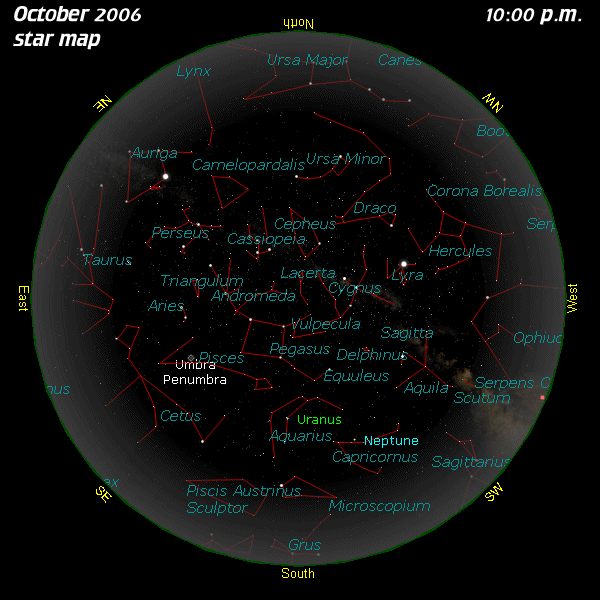



![[Moon Phases]](../moonphases/2006-10-phases.jpg) |
|---|
| Solar X-rays: Geomagnetic Field: |
 |
Current Moon Phase |
![[Hubble Ultra Deep Field]](10-06-hubble-ultra-deep-field.jpg) |
|---|
| This view of nearly 10,000 galaxies is the deepest visible light image ever taken of the cosmos. Called the Hubble Ultra Deep Field, this galaxy studded view represents a deep core sample of the universe cutting across billions of light years. NASA image STScI-PRC2004-07a and caption... |
![[Orionid Meteor Radiant]](10-06-orionids.gif) |
|---|
| Orionid Meteors radiate from just east of the elbow of Orion the Hunter. Rates of about 10-20 meteors per hour can be expected after 2 a.m., the time for which this map has been constructed. Gary A. Becker graphics... |
![[Pleiades/Milk Dipper]](10-06-pleiades-bryce.jpg) |
|---|
| The "Milk Dipper" or Pleiades star cluster (center right) rises above silent Ponderosa pines at Bryce Canyon National Park in SW Utah. This seven minute digital image was taken just before dawn on the extremely dark morning of July 28, 2006. A lightning strike in northern Arizona the previous afternoon had darkened much of SW Utah, including the Park's Visitor Center where this image was taken. Below the Pleiades one can see the sideways "V" of Taurus the Bull. To the left of the Pleiades is the red smear of the California nebula. Its color is created by glowing hydrogen gas. Gary A. Becker digital photo... |
 |
